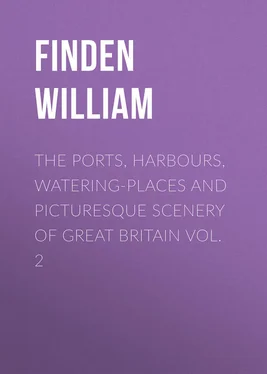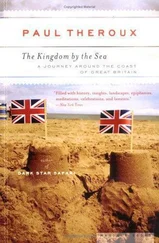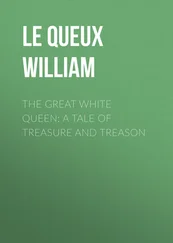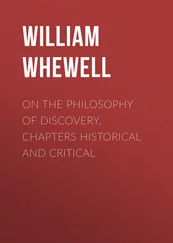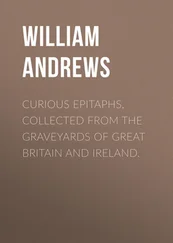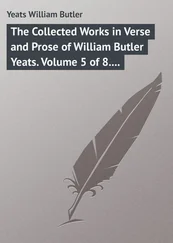William Finden - The Ports, Harbours, Watering-places and Picturesque Scenery of Great Britain Vol. 2
Здесь есть возможность читать онлайн «William Finden - The Ports, Harbours, Watering-places and Picturesque Scenery of Great Britain Vol. 2» — ознакомительный отрывок электронной книги совершенно бесплатно, а после прочтения отрывка купить полную версию. В некоторых случаях можно слушать аудио, скачать через торрент в формате fb2 и присутствует краткое содержание. Жанр: visual_arts, foreign_antique, foreign_prose, на английском языке. Описание произведения, (предисловие) а так же отзывы посетителей доступны на портале библиотеки ЛибКат.
- Название:The Ports, Harbours, Watering-places and Picturesque Scenery of Great Britain Vol. 2
- Автор:
- Жанр:
- Год:неизвестен
- ISBN:нет данных
- Рейтинг книги:3 / 5. Голосов: 1
-
Избранное:Добавить в избранное
- Отзывы:
-
Ваша оценка:
- 60
- 1
- 2
- 3
- 4
- 5
The Ports, Harbours, Watering-places and Picturesque Scenery of Great Britain Vol. 2: краткое содержание, описание и аннотация
Предлагаем к чтению аннотацию, описание, краткое содержание или предисловие (зависит от того, что написал сам автор книги «The Ports, Harbours, Watering-places and Picturesque Scenery of Great Britain Vol. 2»). Если вы не нашли необходимую информацию о книге — напишите в комментариях, мы постараемся отыскать её.
The Ports, Harbours, Watering-places and Picturesque Scenery of Great Britain Vol. 2 — читать онлайн ознакомительный отрывок
Ниже представлен текст книги, разбитый по страницам. Система сохранения места последней прочитанной страницы, позволяет с удобством читать онлайн бесплатно книгу «The Ports, Harbours, Watering-places and Picturesque Scenery of Great Britain Vol. 2», без необходимости каждый раз заново искать на чём Вы остановились. Поставьте закладку, и сможете в любой момент перейти на страницу, на которой закончили чтение.
Интервал:
Закладка:
CONWAY QUAY
The district of Conway is mostly agricultural, and possesses no distinct manufactures by which the prosperity of the town and its population can be greatly promoted. A few small trading-vessels belong to the port; and here also ships of burden are occasionally repaired. The great improvement to the harbour is the erection of the quay; and the channel of the river having been deepened, and every impediment to the navigation removed, it may be anticipated that a speedy increase of trading intercourse will succeed its former languor and inactivity. The exports consist chiefly of timber, slate, and lead; and the imports, of coal from Flint and Liverpool, and of tea, sugar, cotton, with various other articles of domestic consumption.
The chain-bridge, which constitutes so beautiful a feature in the picture of Conway, was erected by Mr. Telford, of whose genius Wales possesses several of the noblest monuments. That immediately under notice – constructed on the same principles as the bridge over the Menai, but much smaller in its proportions – is three hundred and twenty feet between the supporting towers, and eighteen feet above high-water mark. Nothing can be more elegant and beautiful, as it appears lightly spanning the river, and suffering the eye to penetrate its net-like fabric, so as scarcely to offer an obstruction to the landscape which shines through it. The scenery at this point is exceedingly interesting, and presents the works of nature, and art, and human genius, in striking combination.
The town of Conway, before the formation of the railroad, was one of the most old-world places imaginable, unique for its faded and forlorn appearance, small as is the area enclosed, a considerable portion being occupied by open spaces and gardens. Everywhere entered by gothic portals, and as its interior was traced, with the defensive wall everywhere in sight, it transported the beholder back to the middle ages, more than any other walled city in England. There is a singular and picturesque variety of ancient houses; some at the head of the street leading to the castle, curiously carved, appear almost as old as the castle itself; others with their gable roofs, and black rafters, are of later date, and the Plas Mawr, or great mansion, in the principal street, prominently challenges the traveller's attention with its air of faded magnificence and singular construction. It is of Elizabethan architecture, and the arms of England, with initial letters E. R. and R. D., supposed to be Robert Dudley, Earl of Leicester, as well as those of R. W., Robert Wynne of Gwydir, sheriff of Carnarvon in 1591, and founder of the house, occur frequently, and the place is lavishly adorned with various decorative devices of the age – swans, owls, ostriches, mermaids, ragged staves, &c. The church contains little to interest beyond its front, and an inscription to a certain Nicholas Hooker, of Conway, gentleman, of a very anti-Malthusian import, the said Nicholas, though the father of twenty-seven children, being but a degenerate copy of his father, who could boast — O si sic omnia! – of no less than forty-one.
Numerous and delightful are the rambles about this most picturesque place, which is backed by bold heathy hills and green sequestered valleys. One of the prettiest is to Gyffin, about a mile distant, which may be reached by following up the shores of the creek, south of the castle, and the small stream coming down into it. The little church is very ancient, and contains some curious paintings worthy of inspection; it is half buried, and so unpretending is the building in aspect, that it may be passed almost without noticing its sacred character. There is an excellent view of the town and castle from the upper road on the return; the long line of walls may be traced from the highest point, as they sweep round and join the castle, the whole space thus enclosed resembling in its outline the Welsh harp, as often suggested. The river and hills appear finely beyond. The artist especially should not omit to view Conway from this, perhaps its finest point of view.
So unique is, or rather was, Conway Castle in picturesque effect, that it is difficult to mention any particular point from which it appears to greater advantage than another. From the quay, or the river, from every eminence around, seen in front or flank, near or distant, either by itself, or where the walls of the town prominently enter into the composition, it is, or rather was, alike unequalled. The tourist who is not pressed for time, and delights to hover around so magnificent a memorial of past ages, will study it at every point. On taking a solitary walk round the walls, he may fancy himself tracing the abandoned battlements of some old gothic town of the Orient, Rhodes, or Antioch, or the Saracenic defences of Jerusalem; a dream which may hardly be long indulged at present; for now, as Hood says,
"That iron age, which some have thought
Of mettle rather overwrought,
Is now all over cast ,"
and its crumbling memorials are sharing the same fate. Furness Abbey is turned into a railway station, and the passing train thunders through the very centre of old, castellated Conway, reminding us, while it indeed scares away all romantic daydreams, of the happy change from feudal oppression and border warfare, to the fusion of jarring interests, and the progress of enlightened civilization.
THE MENAI BRIDGE
The Menai Bridge, one of the many triumphs of modern engineering, arose from the following circumstances. During the summer of 1818, Mr. Telford, the engineer, was engaged on a survey of the extensive line of road from the metropolis to Holyhead – that point of the Welsh coast nearest to Ireland, and situated in the Island of Anglesea. Between this island and the Caernarvon coast flows that arm of the sea familiar to every reader as the Menai Straits, through which the tide rushes with great velocity, owing to local peculiarities well known to all who have navigated that portion of the Channel. There were at this time five or six ferries across the strait; but these, owing to the circumstances mentioned, were generally difficult, and seldom without danger; so that the intercourse between the opposite shores being much impeded, was a source of daily inconvenience to the inhabitants. This was more particularly felt from the fact that one of the staple productions of Anglesea was its cattle, which, when sold for the inland counties or the London market, had to be driven into the water, and compelled to cross the strait by swimming, which was attended with risk of property as well as inconvenience. These circumstances were brought before the eyes of Telford, and his ever-active and ingenious mind set instantly to work, in order to remedy the evil by providing new facilities of intercourse. The result of his reflections and mature calculations on this engrossing topic was the possibility of throwing a bridge across the Menai.
The grand obstacle was a deep rapid tide-stream with high banks. To have erected a bridge of the usual materials would have obstructed the navigation; and any attempt to erect piers in the shifting bed of the sea must have inevitably proved a failure. Telford therefore recommended the erection of a suspension-bridge; and the plan, after due consideration, being approved by government, the work was commenced in 1820, carried on with great spirit, and in 1826 brought to a most successful termination. It is partly of stone, partly of iron, and consists of seven stone arches. These arches connect the land with the two main piers, which rise on an elevation of fifty-three feet above the level of the road, over the top of which the chains are suspended, each of which measures from its fastenings in the rock, one thousand seven hundred and fourteen feet. The topmasts of the first three-masted vessel which passed under the bridge were nearly as high as those of a frigate, but they cleared twelve feet and a half below the level of the roadway. The suspending power of the chains is calculated at two thousand and sixteen tons; and the total weight of each chain is one hundred and twenty-one tons.
Читать дальшеИнтервал:
Закладка:
Похожие книги на «The Ports, Harbours, Watering-places and Picturesque Scenery of Great Britain Vol. 2»
Представляем Вашему вниманию похожие книги на «The Ports, Harbours, Watering-places and Picturesque Scenery of Great Britain Vol. 2» списком для выбора. Мы отобрали схожую по названию и смыслу литературу в надежде предоставить читателям больше вариантов отыскать новые, интересные, ещё непрочитанные произведения.
Обсуждение, отзывы о книге «The Ports, Harbours, Watering-places and Picturesque Scenery of Great Britain Vol. 2» и просто собственные мнения читателей. Оставьте ваши комментарии, напишите, что Вы думаете о произведении, его смысле или главных героях. Укажите что конкретно понравилось, а что нет, и почему Вы так считаете.
